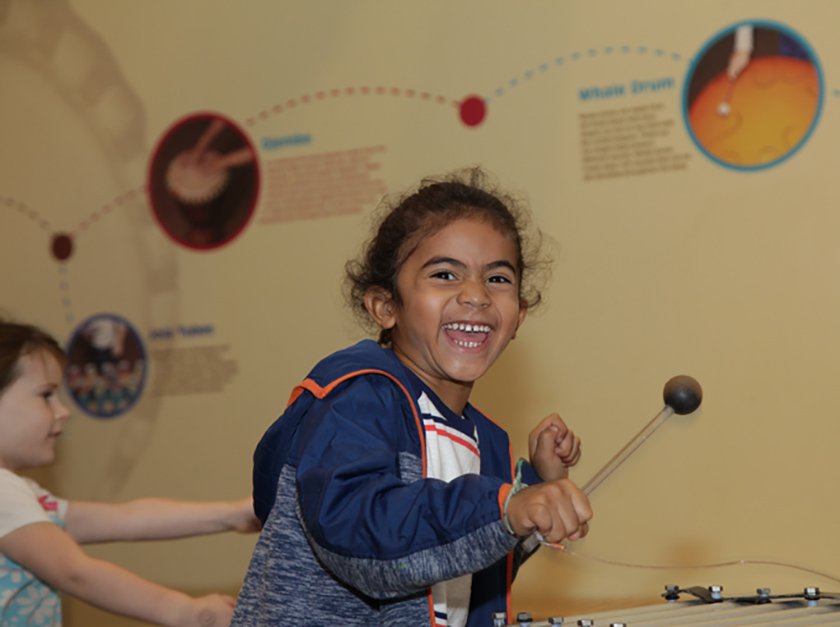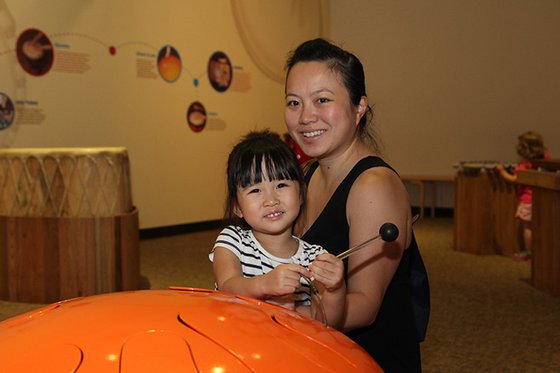Hear the sound in music and the music in sound. Ambient sound is everywhere, and music is something all cultures have in common. Just like language, music is a shared, expressive, inventive, portable way for people all around the world to be together. We may not speak the same language, but we can have conversations through music by creating and listening to rhythms, melodies and harmonies.
What You Learn:
- Rhythm
- Listening skills
- Fine and gross motor control
- Global and cultural diversity

Have a musical conversation using any of the instruments in our Drum Circle Room. Keyed instruments are tuned to the pentatonic scale to create a melodic jam session.
Sound play and music are more than entertainment. They can be life-long sources of delight, expression, being together, learning and inventing. Research shows that young brains are elastic and music can stimulate that growth. Listening is the first of our senses to develop. Music is fundamentally about playing and growing together.
“Researchers have demonstrated that two to three day old babies can detect the beat in music. It enables such actions as clapping, making music together and dancing to a rhythm.” - Winkler et al. Newborn infants detect the beat in music. Proceedings of the National Academy of Sciences, Jan 25, 2009.
What instruments surround you?
Continue the Fun at Home
See with your ears. Close your eyes, tell us what you’re hearing as you walk through your neighborhood. Remember, there’s a different story being told everywhere you walk.
